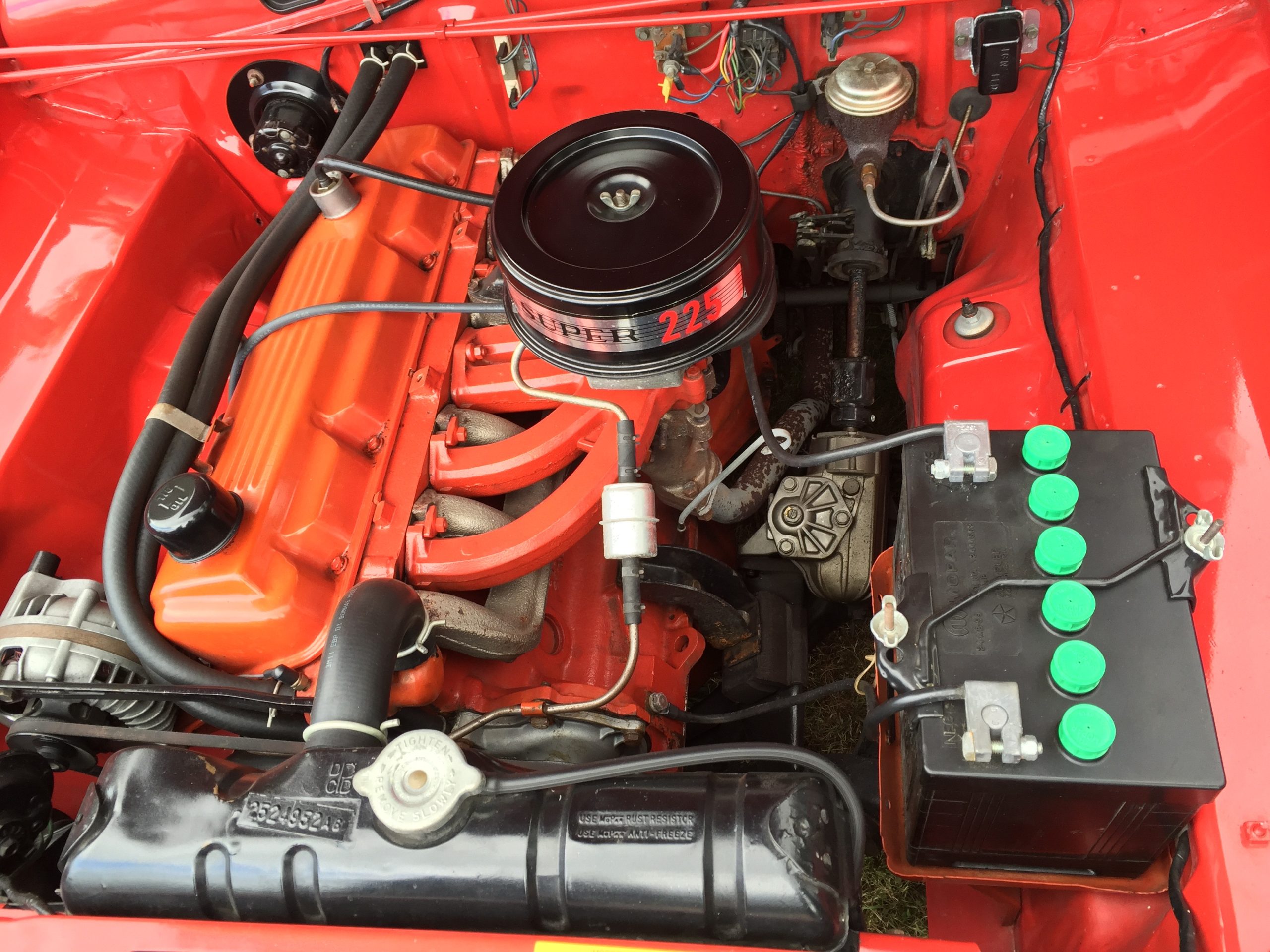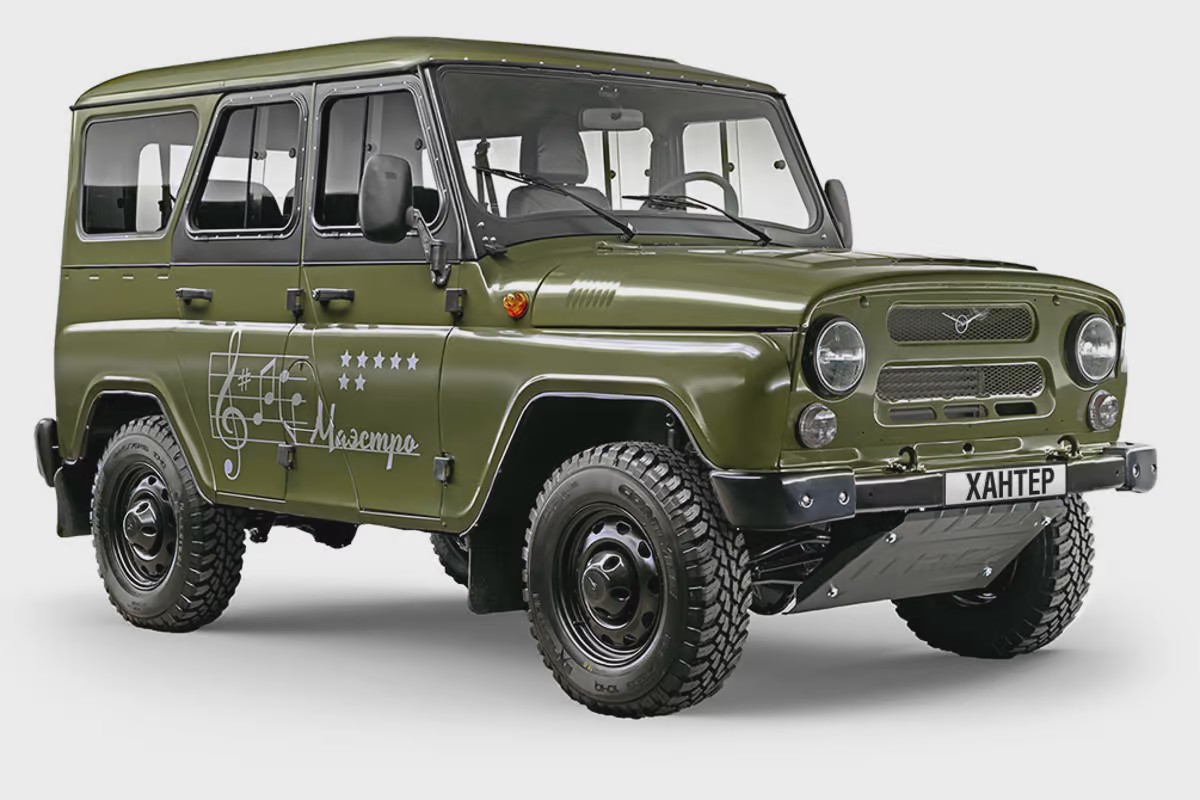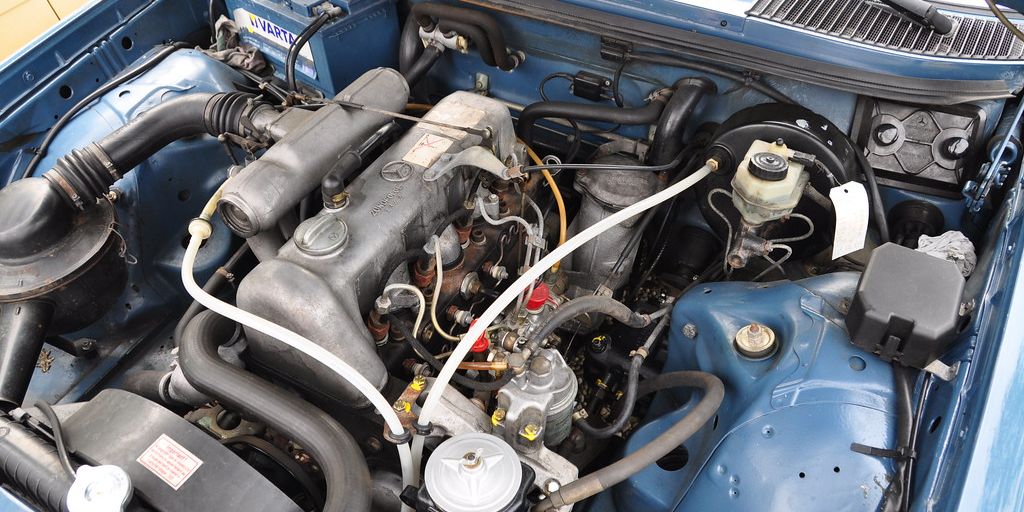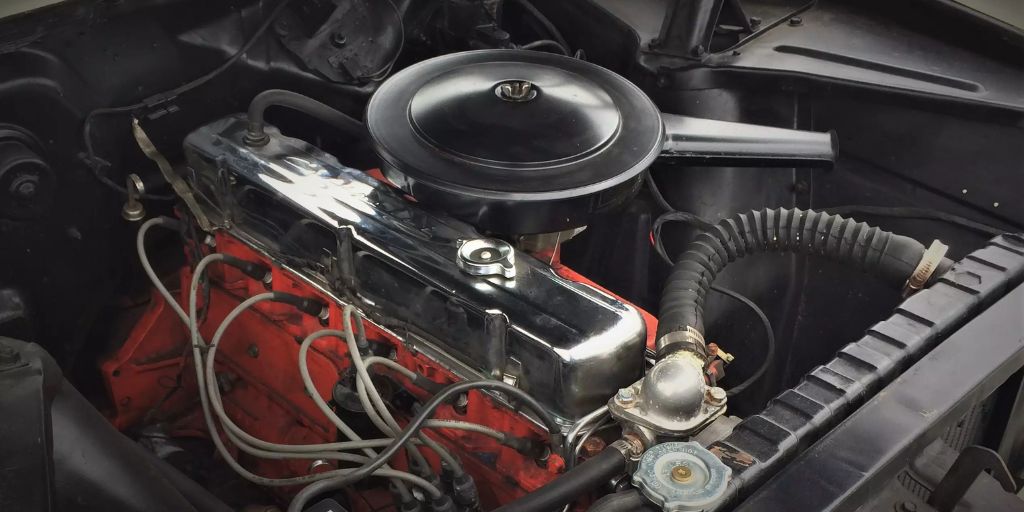Military vehicles are often imagined as purpose-built machines engineered from scratch with battlefield-only parts.
But what many people don’t realize is that a surprising number of military trucks around the world have relied on engines originally designed for 1970s civilian cars.
These engines, born from commercial needs, found new life under far more demanding conditions—carrying troops, supplies, and armor across deserts, jungles, and mountains.
The logic behind this reuse is simple and compelling: civilian engines from the 1970s were designed to be durable, easy to repair, and mechanically simple.
These attributes made them perfect for military use, where field serviceability and reliability are more important than cutting-edge tech or high performance.
During the Cold War era and beyond, armies around the world prioritized robustness and compatibility over sophistication, leading to a practice of repurposing well-known civilian powerplants for combat-ready machines.
Governments also favored engines with existing production lines and abundant spare parts. This meant that even decades after their design, some engines originally fitted to family sedans, pickup trucks, or full-size station wagons were still cranking away under the hoods of military trucks and tactical vehicles.
From the GM inline-sixes to Soviet Ladas’ bulletproof four-cylinders, these engines were repackaged, uprated, and sometimes barely modified at all to function in extreme conditions.
They found homes in military trucks used by NATO allies, Soviet bloc forces, and developing nations alike. Some of these vehicles are still in use today—quietly proving that a 50-year-old design can still pull its weight in the modern world.
This article explores the fascinating stories behind these humble powerplants, showing how civilian technology from the disco era became the beating heart of rugged military transport.
Also Read: Engines That Can Run for 500 Hours Without an Oil Change
The GM 250 Inline-Six: From Family Car to Battlefield Mule
One of the most enduring examples of a civilian engine entering military use is General Motors’ 250 cubic inch (4.1L) inline-six engine.
Originally used in Chevy cars and trucks throughout the 1960s and 70s—such as the Chevrolet Nova and C10 pickups—this engine became the workhorse for many military trucks worldwide.
Why it worked:
- Simplicity: It had a cast-iron block and head, a pushrod valvetrain, and mechanical fuel pump.
- Torque-rich: Low-end torque was ideal for heavy loads and off-road driving.
- Easy maintenance: Spark plugs, belts, and carburetors could be serviced with hand tools.
Military usage:
Countries like Argentina and Brazil built military trucks in the 1980s and 90s using these engines, such as the Agrale Marruá, a 4×4 utility vehicle designed for the Brazilian Army. Though the body was all new, the engine came straight from GM’s 1970s playbook.
The Chrysler Slant-Six: The Unsung Hero
Chrysler’s Slant-Six, first introduced in the 1960s, was another engine that found military use deep into the 1980s and beyond. Known for its reliability, this 225-cubic-inch (3.7L) inline-six was used in everything from the Plymouth Valiant to Dodge D-Series trucks.
Why it mattered militarily:
-
Its unique 30-degree slant allowed for a lower hood profile, which meant more versatile vehicle design.

-
It ran on poor-quality fuel and resisted overheating, which was crucial in remote or desert environments.
Military vehicles:
The Slant-Six appeared in various utility and transport trucks in the U.S. National Guard and was also adopted by foreign armies using ex-U.S. vehicles.
The UAZ-469 and Lada Engines: Simplicity in the Soviet Style
The Soviet Union took a very practical approach to engine sourcing. The UAZ-469, one of the most iconic military utility vehicles from the Eastern bloc, used an engine derived from civilian Volga sedans—a 2.5L inline-four producing around 75 hp.
Why the Soviets loved it:
- It was brutally simple and ran under almost any conditions.
- Minimal electronics and no emissions gear made it a perfect match for harsh field environments.
- The same engine platform was used in taxis, sedans, and police cars, ensuring easy access to spare parts.

Lada engines also made their way into smaller military vehicles like the Niva 4×4, a light-duty vehicle used for border patrol and reconnaissance roles.
Mercedes OM615/OM616 Diesels: Rugged Global Runners
Mercedes-Benz diesel engines from the 1970s—specifically the OM615 and OM616 inline-fours—powered hundreds of thousands of W115 and W123 sedans and wagons.
These engines, praised for their longevity and simplicity, found a second life in military and paramilitary vehicles across Africa, the Middle East, and Asia.
Used in:
- Mercedes G-Wagen military variants
- Utility trucks produced under license in India and Egypt
- UN peacekeeping and aid logistics vehicles

Their naturally aspirated diesel design allowed them to run in poor conditions with minimal maintenance. Their low compression and rugged internals made them practically indestructible.
Ford Windsor V8: A Civilian Muscle Icon Turned Troop Carrier
The 302 and 351 cubic inch (5.0L and 5.8L) Windsor V8s were found in everything from the Mustang to the Ford F-Series trucks. These engines also powered military cargo trucks, fire support vehicles, and even armored personnel carriers in National Guard units.
Why it worked:
- Easy power delivery with ample torque for hauling and towing.
- Huge aftermarket and parts availability.
- Simple carbureted setup or early throttle body injection versions were easy to repair.
Toyota’s 2F Inline-Six: The Land Cruiser Legend
Toyota’s rugged 2F engine was a 4.2L inline-six used in the Land Cruiser FJ40 and later FJ60 models. Originally released in the late 1960s, this engine continued in production well into the 1980s.
Military roles:
- Used by militaries in Australia, Middle East, and Africa.
- Found in military-spec Land Cruisers built for off-grid warfare and relief operations.
- Low-speed torque and basic carburetion made it ideal for hauling loads across deserts or jungles.
Peugeot XDP90 and XD3 Diesel Engines: Lightweight and Global
In many African and Middle Eastern militaries, Peugeot diesels from the 1970s and early 80s were widely deployed. These engines powered military pickups, personnel carriers, and field ambulances built on Peugeot 504 and 505 platforms.

Why they stuck:
- Air-cooled options.
- No electronics.
- Extremely efficient and long-lasting with high-sulfur fuels.
The Economic and Strategic Logic Behind It All
Why would militaries choose these civilian engines instead of newer, more advanced alternatives?
- Parts Commonality: Armies could raid civilian junkyards or parts stores to maintain their fleets.
- Mechanic Training: Troops didn’t need special diagnostic tools—just basic mechanical knowledge.
- Cold War Strategies: NATO and Warsaw Pact nations prepared for long-term warfare. Using existing civilian engine platforms made rapid scaling and field service more realistic.
- Export & Foreign Aid: Donor nations like the U.S. and USSR provided vehicles to allies that couldn’t afford modern logistics. Simpler engines made support easier.
British Army and the Land Rover Diesel
The Land Rover Series III and early Defender models, widely used by the British Army and Commonwealth forces, often utilized engines derived from 1970s civilian models.
The 2.25L petrol and diesel four-cylinder engines were based on the Series II civilian design from 1958, and continued virtually unchanged into military service through the 1980s and even 1990s.
Civilian origin:
- Derived from agricultural utility needs.
- Shared across Range Rover, Land Rover, and light commercial lines.
Military applications:
- British Army 90 and 110 (precursor to Defender models).
- “Lightweight” Air Portable Land Rovers used by paratroopers.
- Field ambulances and reconnaissance units.
While underpowered by modern standards, these engines offered predictable, manageable power and could be fixed by anyone with a wrench and patience.
The military stuck with them for decades because their parts were widely available across the Commonwealth and could survive abuse, low-octane fuel, and rough environments.
Fiat and Iveco Diesels in NATO-Aligned Countries
In Italy, the military leaned heavily on Fiat and later Iveco diesel engines that were also found in 1970s civilian vans and sedans. The Fiat 132, Argenta, and early diesel sedans featured engines like the 2.0L and 2.4L SOFIM diesel inline-fours, which were later integrated into military light trucks.
Used in:
-
Fiat Campagnola 4×4 (used by Italian Army).
-
Iveco VM90, a light multi-purpose vehicle used for troop transport and medical evacuation.
These engines were chosen for their fuel efficiency, simplicity, and familiarity. Maintenance could be done by any Fiat-certified technician, which greatly reduced logistical strain in deployment zones.
Iranian Military Vehicles with Peugeot Roots
Iran, post-1979 revolution, had limited access to new Western technology due to sanctions. As a result, they continued using and manufacturing 1970s Peugeot engines for both civilian and military vehicles.
Key engines:
- Peugeot XN1 and XD diesels, originally found in the 504 sedan and pickup.
- Used in the Iranian-built Paykan, and retrofitted into various 4×4 and light trucks.
Military offshoots of these vehicles were used for border patrol, logistics, and even weapon platform carriers. The robust simplicity of these engines helped the Iranian military field vehicles well into the 2000s using powerplants from the pre-electronic era.
U.S. M880 and M1008 Series—Civilians in Camouflage
In the 1970s, the U.S. military adopted commercial off-the-shelf (COTS) vehicles under the Dodge M880 series and later Chevrolet CUCV (Commercial Utility Cargo Vehicle) M1008 and M1009 series.
Engines used:
- M880 used Chrysler 318ci (5.2L) V8—identical to Dodge pickup trucks and Plymouth sedans.
- M1008 used GM’s 6.2L Detroit Diesel V8, a civilian option in Chevrolet and GMC trucks.
Why the military used them:
- Easy parts compatibility with civilian suppliers.
- Cost-effective fleet acquisition and maintenance.
- Civilian-trained mechanics could service them with no extra training.
Though not meant for frontline combat, these vehicles handled domestic base logistics, towing, and transport duties with ease.
Indian Military and the Mahindra Legacy
Mahindra, India’s major automotive manufacturer, began its life building licensed Willys Jeeps post-WWII. Through the 1970s and into the 2000s, Mahindra military vehicles used engines either directly licensed from Willys or adapted from Peugeot and later in-house Mahindra diesels.
Examples:
- Mahindra MM540 and MM550 Jeeps used the XDP 4.90 Peugeot diesel, based on a 1970s design.
- Mahindra 575 DI and 265 DI tractors, also used for military logistics and border utility work, were based on long-running B-series engines from British and French origins.
These powertrains, while ancient, proved ideal in India’s diverse terrain, from Himalayan passes to desert patrols in Rajasthan. Low maintenance requirements and massive national production ensured their widespread military viability.
Toyota H-Series and B-Series Diesels
The Toyota B and H diesel engines, introduced in the late 1970s, were mainstays of global utility vehicles. The 3.0L and 4.0L diesels powered everything from Land Cruisers to Dyna trucks. These same engines were used in countless military applications.
Military uses:
- Australian Army Land Cruisers with the 2H diesel.
- African peacekeeping forces using Toyota pickups with B-series diesels.
- UN and NGO vehicles used during 1990s conflicts in Rwanda, Sudan, and the Balkans.
Their ability to tolerate poor fuel, their minimal reliance on electronics, and their longevity under load made them ideal for long-term deployment in areas with no access to diagnostic tools or dealer networks.
The Psychological and Strategic Value of Simplicity
Military doctrine often values reliability and logistical efficiency over cutting-edge innovation. Using an engine from a known civilian base accomplishes several strategic goals:
- Spare Parts Abundance: Civilian engines have massive parts availability.
- Rapid Production Scalability: Factories already tooled for civilian vehicles can rapidly produce military variants.
- Training Simplicity: Mechanics trained on civilian cars can be quickly upskilled for military service.
- Fuel Compatibility: Older engines tend to have more forgiving tolerances for contaminated or low-grade fuel.
Simplicity becomes a force multiplier in prolonged deployments, asymmetric warfare, and humanitarian missions where vehicle downtime can be fatal.
African and South American Militaries’ Extended Use
In many developing nations, military forces lack the budget to import or maintain modern high-tech vehicles. Therefore, engines designed in the 1970s continue to power military fleets to this day.
Examples:
- In Nigeria and Kenya, diesel-powered Peugeot 504 pickups with military modifications are still used for troop transport.
- Argentina’s Vehículos de Combate Liviano (VCL) use powertrains based on Renault civilian models from the 70s.
- In Bolivia and Peru, Nissan and Toyota 2.4L and 2.7L gasoline engines from 1970s Hilux and Datsun pickups are still in field use.
These engines, with their mechanical fuel pumps, non-electronic ignition, and straightforward internals, allow for “bush repairs” using scavenged or handmade parts.
The idea that modern military trucks might be powered by old civilian car engines from the 1970s may seem strange at first glance, but it’s a reflection of the timeless engineering that came out of that era.
These engines were never designed for war, yet they endured it—often far better than the complex, electronically tethered powertrains of later decades.
From the gritty battlefields of the Middle East to icy northern outposts and humid jungle patrols, engines like the GM inline-six, Mercedes diesels, and Soviet-era four-bangers have proven they can take punishment.
Their success didn’t stem from cutting-edge technology, but from mechanical honesty. They were easy to fix, tough as nails, and utterly dependable—qualities any military values above all else.
Even today, in the age of hybrid tactical vehicles and drone resupply convoys, many of these old trucks and engines are still in service.
In remote areas where supply chains are limited and technology often fails, simplicity reigns. And that’s why engines designed for 1970s family cars still roar to life under military hoods.
It’s a quiet testament to old-school engineering and a reminder that sometimes, the best engine for the job isn’t the newest—it’s the one that keeps running, no matter what.

